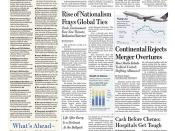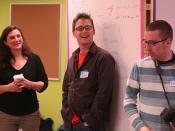Most Internet users are either not charged to access information,
or pay a low-cost flat fee. The Information SuperHighway, on the
other hand, will likely be based upon a pay-per-use model. On a
gross level, one might say that the payment model for the Internet
is closer to that of broadcast (or perhaps cable) television while
the model for the Information SuperHighway is likely to be more
like that of pay-per-view T.V.
'Pay-per-use' environments affect user access habits. 'Flat fee'
situations encourage exploration. Users in flat-fee environments
navigate through webs of information and tend to make serendipitous
discoveries. 'Pay-per-use' situations give the public the incentive
to focus their attention on what they know they already want, or to
look for well-known items previously recommended by others. In
'pay-per-use' environments, people tend to follow more traditional
paths of discovery, and seldom explore totally unexpected avenues.
'Pay-per-use' environments discourage browsing. Imagine how a person's
reading habits would change if they had to pay for each article they
looked at in a magazine or newspaper.
Yet many of the most interesting things we learn about or find come
from following unknown routes, bumping into things we weren't looking
for. (Indeed, Thomas Kuhn makes the claim that, even in the hard
sciences, real breakthroughs and interesting discoveries only come
from following these unconventional routes [Kuhn, Thomas, The Structure
of Scientific Revolutions, Chicago: University of Chicago Press, 1962]).
And people who have to pay each time they use a piece of information are
likely to increasingly rely upon specialists and experts. For example,
in a situation where the reader will have to pay to read each paragraph
of background on Bosnia, s/he is more likely to rely upon State Department
summaries instead of paying to become more generally informed him/herself.
And in...


